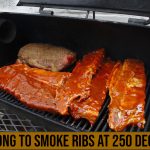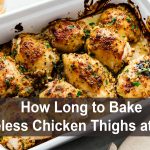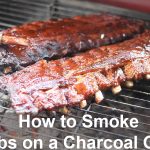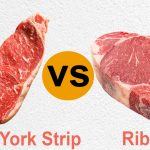For the true meat-lovers out there, venison backstrap is a delicious and succulent cut of meat that’s often overlooked. Venison backstrap is one of the most coveted pieces of meat from the animal and is widely considered to be one of the tastiest cuts around. But what many people don’t know is that it can also be incredibly simple to cook.
This article will discuss all aspects on how to cook venison backstraps, including strategies for marinating, cooking time and temperature tips as well as suggestions for sides and sauces so you can get restaurant-quality results in your own kitchen!
What is a Venison Backstrap?
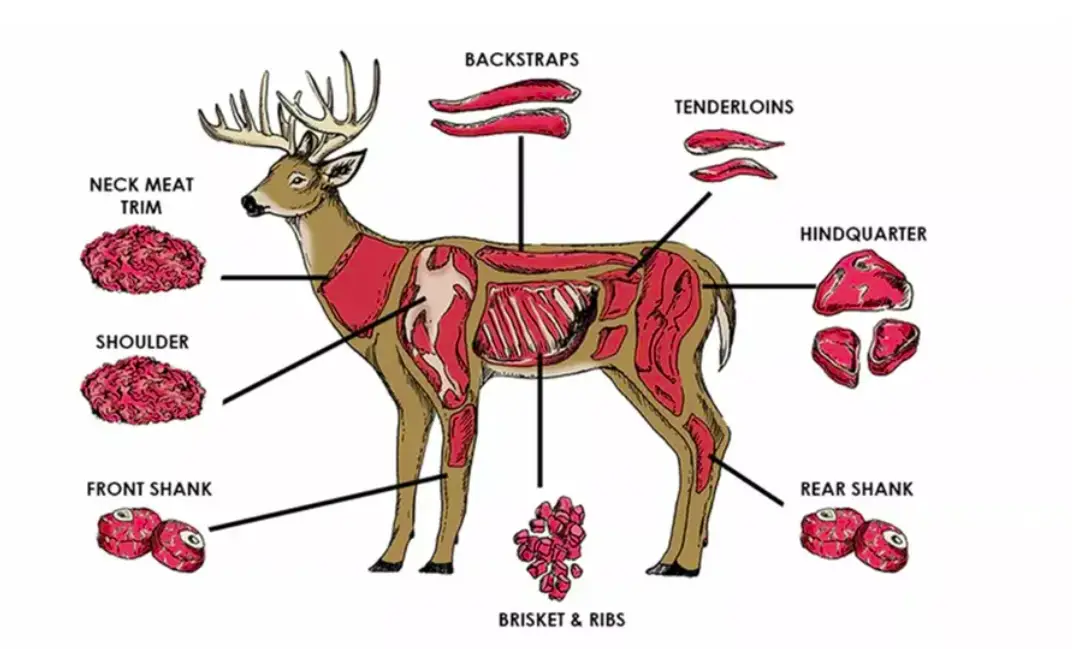
Venison backstrap is the cut of meat that runs along either side of the spine in deer, elk, moose, and caribou. It is one of the most tender cuts on any animal and has a firm texture and rich flavor. Depending on where you get your venison from, it can be sold whole or sliced into smaller pieces, making it easier to cook with.
Venison Backstrap Nutrition:
Although venison backstrap is often considered to be a “rich” or “heavy” meat, it actually contains a relatively low amount of fat and cholesterol compared to other types of red meat. This makes it an excellent choice for people who are health conscious but love the taste and texture of red meat. In addition, venison backstrap is rich in protein, iron, zinc, potassium, and several other essential vitamins and minerals that can help keep your body healthy and strong.
How Long To Cook Venison Backstrap?
The cooking time for venison backstrap will depend on a few different factors, including the exact cut and thickness of the meat. In general, for thicker cuts you will want to cook at lower temperatures for longer periods of time in order to ensure that it is cooked evenly all the way through without drying out. For thinner cuts, you can usually cook at higher temperatures more quickly without overcooking or burning the outside.
Some great tips for cooking venison backstrap include:
-Using a marinade to help infuse additional flavor into the meat before cooking
-Investing in a good quality digital thermometer so that you can monitor your temperature accurately as you cook
-Cooking your venison backstrap over a hot grill or broiler for a crispy, caramelized crust
-Serve with your favorite sides and sauces, such as mashed potatoes, roasted vegetables, gravy, or tangy BBQ sauce!
How to Cook Venison Backstrap
One of the best ways to enjoy venison backstrap is by marinating it and then roasting it slowly over low heat. This ensures that the meat remains juicy and tender while also locking in a ton of delicious flavor from the marinade.
To get great results with this method, simply follow these steps:
1. Prepare your marinade. The sky is the limit when it comes to venison backstrap marinades, but some popular options include soy sauce, lemon juice, honey, garlic, and chilies – so feel free to experiment until you find your favorite combination!
2. Place the pieces of venison backstrap in a large sealable plastic bag or bowl, then pour the marinade over top. Mix well to ensure that all parts of the meat are fully coated with the marinade, then place them in your refrigerator to let them sit for at least 30 minutes.
3. Preheat your oven to 275 degrees Fahrenheit and line a baking dish with aluminum foil. Remove the venison backstrap from the fridge, then lay it out flat on the prepared baking dish. Roast it in the oven until it reaches an internal temperature of 140 degrees – this will take between 1-2 hours depending on how thick your pieces are. Once they have reached their ideal temperature, remove them from the oven and enjoy as is or pair with your favorite sides!
Cooking Venison Backstrap
Once you’ve chosen a marinade for your venison backstrap, there are lots of different ways to cook it. Some of the most popular cooking methods include pan frying, grilling over an open flame, roasting in the oven, or even smoking it depending on your preferences.
Regardless of the method you choose, it’s important to start with a hot pan or grill and let your meat sear for at least 30 seconds before flipping. During cooking, keep in mind that venison backstrap is a very lean meat so it’s best to avoid the temptation to add extra oil unless needed. Cooking time will depend on how thick your cut is and how well done you like your meat, but it typically takes between 5-7 minutes per side for medium rare results.
If you want to serve your venison backstrap with a delicious sauce, there are lots to choose from depending on what type of flavor profile you prefer! Some popular options include:
>Pepper jelly sauce: This spicy sauce is made using pepper jelly, lime juice and cilantro. Simply mix all the ingredients together in a bowl until well combined and then add salt to taste if needed.
>Horseradish cream sauce: This creamy option is perfect for those who love bold flavors! Mix horseradish with Greek yogurt, chopped chives and lemon zest along with salt and pepper.
>Chimichurri sauce: For a simple but flavorful tangy option, chimichurri is hard to beat! All you need to make this Argentinian favorite are fresh parsley, garlic, red wine vinegar, olive oil, oregano and red chili flakes. Just combine these ingredients in a food processor or blender and blend until smooth to create a perfect sauce for your venison backstrap.
One of the great things about venison is that it’s one of the most versatile types of meat out there, meaning you can really cook it however you want! So why not try using some of these tips next time you are cooking up some delicious deer steak?
They’re sure to give your venison backstrap an extra boost of flavor and make your cooking experience even more enjoyable!
How To Cook Venison Backstrap On The Grill
If you enjoy cooking outdoors with your family or friends, then you may want to consider grilling your venison backstrap. Grilling your venison can be a great alternative to using the oven or stovetop because it allows you to take full advantage of the summertime weather outside.
To prepare venison backstrap for grilling, first trim off any excess fat, silver skin, or membrane from the outside of the meat. Then, marinate your venison backstrap overnight in a mixture of your favorite barbecue sauce, olive oil, soy sauce, lemon juice, garlic powder or fresh garlic, and any other desired seasonings.
Next, preheat your grill to a medium-high temperature (around 400-450 degrees). Once it is hot enough to cook the meat properly, place your venison backstrap on the grill and close the lid to prevent heat loss. Cook for about 5-10 minutes per side until the meat has reached an internal temperature of at least 150 degrees for medium-rare doneness.
Finally, remove your cooked venison backstrap from the grill and let it rest for at least 5-10 minutes before slicing and serving. Enjoy your delicious grilled venison backstrap with your favorite sides, such as roasted potatoes, coleslaw, or corn on the cob!
Tips for Cooking Venison Backstrap
-Venison backstrap is a very lean cut of meat, so it’s important to use a marinade that will keep it from drying out. You can also opt for more fatty meats like pork loin or bacon as an accompaniment.
-There are many delicious sauces and sides you can serve with venison backstrap, such as mashed potatoes, roasted vegetables, or even wild rice pilaf. Experiment until you find your favorite combinations!
-When preparing your marinade and cooking time/temperature guidelines, always start with small amounts to test them out – this way you can make changes if needed without wasting your ingredients.
If you’re looking for an easy and delicious way to cook venison backstrap, then be sure to follow these tips and try out the recipe above! With a little practice and experimentation, you’ll soon be cooking restaurant-quality meals right in your own kitchen. Have fun!
Marinating Venison Backstrap
One of the best ways to enhance the flavor and tenderness of venison backstrap is through marination. This step is especially important if you are using tougher cuts that have been frozen for months or years as it will help break down some of these toughness and add more flavor. There are many different marinades you can use for venison backstrap, but here are three of the most popular:
>Garlic and herb: This classic marinade uses fresh or dried herbs like parsley, thyme, sage, rosemary, and basil combined with crushed garlic cloves, olive oil, salt and pepper. Simply combine these ingredients in a bowl and massage into your venison backstrap before allowing it to sit in the fridge for at least an hour.
>Teriyaki sauce: For those who prefer something sweet and savory with their meat, teriyaki is hard to beat! Teriyaki is made by simply combining soy sauce with brown sugar or honey along with ginger root and crushed garlic.
>Barbecue sauce: If you’re a fan of barbecue, then this marinade is perfect for you! Simply combine equal parts ketchup and apple cider vinegar with paprika, salt, pepper, brown sugar or honey and your favorite type of barbecue sauce. Massage this mixture into the venison backstrap before letting it sit in the refrigerator overnight or longer for maximum flavor infusion.
Tips for Marinating Venison Backstrap:
There are many different ways to marinate venison backstrap depending on the flavor profile you’re going for. A simple combination of olive oil, soy sauce, lemon juice, garlic powder or fresh garlic, salt, and pepper is a classic choice that works well for any type of meat.
For more complex flavor profiles, you can try marinating your venison backstrap in a mixture of soy sauce, brown sugar or maple syrup, lime juice or lemon juice, chili powder or cayenne pepper, crushed ginger root or ginger powder, and other spices to taste.
When it comes to cooking time and temperature tips for venison backstraps, there are several important things to keep in mind. First and foremost, it’s important to cook the meat at a high enough temperature so that it gets nice and brown on the outside without drying out the inside. For best results when cooking whole pieces of venison backstrap, it’s recommended to cook them at a medium-high temperature of around 350-375 degrees in the oven.
If you prefer to grill your venison backstrap, you can also cook it over higher temperatures (around 400-450 degrees) on a charcoal or gas grill, depending on how hot your grill tends to get. Be sure to always keep an eye on your venison backstrap while cooking to avoid overcooking the meat and making it dry and tough.
Ideas for Delicious Side Dishes & Sauces:
Some delicious side dishes that pair well with venison backstrap include mashed potatoes, roasted vegetables, wild rice or quinoa salad, fresh fruit salad, green salads with balsamic vinaigrette dressing, and more.
For an extra special touch, you can also try using your favorite barbecue or Asian-inspired sauces to top off your venison backstrap for a bold flavor profile that’s sure to delight your taste buds. Some popular options include teriyaki sauce, hoisin sauce, balsamic glaze, chimichurri sauce, and more.
So if you’re looking for an easy and delicious way to cook up some tender and flavorful venison backstraps in your own kitchen, follow the tips outlined above to get restaurant-quality results every time!
How To Know If Venison Backstrap Is Done
There are a few key signs that can help you determine when your venison backstrap is done cooking. The first and most obvious sign is that the meat will become firm, with a texture that is slightly springy to the touch rather than soft and squishy.
You can also use a meat thermometer or food thermometer to check the internal temperature of your venison backstrap, which should reach at least 150 degrees for medium-rare doneness. Other signs to look out for include any pink juices coming from the meat, which indicates that it has not fully cooked through; any dark brown spots or charred areas on the outside of the meat, which means that it was overcooked; and an overall appetizing appearance and aroma, which indicates that the meat is fully cooked and ready to enjoy.
So if you’re looking for a delicious and easy way to prepare venison backstrap, be sure to follow these tips for optimal results!
How To Prepare Venison Backstrap
There are several different methods for preparing venison backstrap, depending on your personal preferences and the tools you have available. One of the simplest and most popular preparation methods is to simply marinate the meat overnight or longer in a mixture of olive oil, soy sauce, lemon juice, garlic powder or fresh garlic, salt, and pepper.
Alternatively, you can also try using one of your favorite barbecue or Asian-inspired sauces to marinate and flavor the venison backstrap. For best results when cooking whole pieces of venison backstrap, it’s recommended to cook them at a medium-high temperature in the oven (around 350-375 degrees) or over high heat on a charcoal or gas grill (around 400-450 degrees).
To ensure that your venison backstrap is fully cooked and moist on the inside, be sure to always keep an eye on it while it’s cooking and check for signs of doneness such as firmness and a springy texture, browned or charred areas on the outside, pink juices coming from the meat, or an appetizing appearance and aroma. In addition, you can also use a meat thermometer or food thermometer to check the internal temperature of your venison backstrap to confirm that it has reached at least 150 degrees for medium-rare doneness.
How to Store Venison Backstrap
To properly store venison backstrap, it’s important to keep the meat in a tightly-sealed container or wrap in plastic or aluminum foil to prevent exposure to air. You can also try freezing the venison backstrap for long-term storage, which will help retain its flavor and texture. For best results, freeze venison backstrap as soon as possible after purchasing and be sure to defrost it overnight in the refrigerator before cooking.
Another option is to vacuum seal the meat using a food sealer or home vacuum sealer kit. This helps protect the meat from freezer burn by removing all of the excess air from inside the packaging, which helps preserve quality for several months at a time. However, be sure to check the expiration date on the meat to ensure that it has not spoiled.
So if you’re looking for an easy and delicious way to cook up some tender and flavorful venison backstrap in your own kitchen, be sure to follow these tips for optimal results!
How to Reheat Venison Backstrap
There are several different methods for reheating venison backstrap, depending on your preferences and the tools you have available. One of the simplest and most effective approaches is to simply place the meat in a skillet or grill pan over medium-high heat and cook until it reaches your desired level of doneness.
Alternatively, you can also try using a microwave oven to quickly defrost and rewarm your venison backstrap. To do so, simply place the meat on a microwave-safe plate or bowl, cover it with plastic wrap or parchment paper, and defrost it on low power for 1-2 minutes. After that, increase the power setting to high for 2-3 minutes or until the meat reaches your desired temperature.
And finally, another common and convenient way to reheat venison backstrap is by using an oven or slow cooker. Simply preheat the oven to 350 degrees F or set your slow cooker to a low setting, then place the meat in a baking dish or container and heat until it’s fully warmed through. Be sure to check the internal temperature of the meat with a meat thermometer or food thermometer before serving and enjoy!
What to Serve with Venison Backstrap
There are many delicious side dishes and recipes that you can serve alongside venison backstrap to complement the rich flavor of the meat. Some popular options include roasted vegetables like potatoes or Brussels sprouts, savory stews or soups, flavorful rice pilafs or grain salads, and fresh salads with a variety of greens and other ingredients.
You can also try experimenting with different seasonings and sauces to enhance the flavor profile of your venison backstrap. For example, some tasty combinations to try include Worcestershire sauce, balsamic vinegar, dijon mustard, sage or rosemary seasoning blends, and creamy citrus-based dressings like key lime vinaigrette.
And finally, if you’re looking for a unique and indulgent way to enjoy your venison backstrap, why not try grilling or pan-searing it and serving it alongside some rich chocolate sauce or berry compote? This will add a sweet and decadent touch that is sure to please any palate. So whether you’re looking for quick weeknight meals or something more elaborate for special occasions, there are plenty of delicious options to choose from when serving venison backstrap!
Common Mistakes To Avoid When to Cook Venison Backstrap
1. Not allowing the meat to come to room temperature before cooking. This can cause uneven cooking and may also lead to overcooking or undercooking the venison backstrap, which can significantly affect its flavor and texture.
2. Using a pan that is too hot, which can cause the meat to burn on the outside before it has fully cooked through. Be sure to use a pan with a lower heat setting and monitor your food closely as it cooks.
3. Not letting the meat rest after cooking. This allows any juices inside the venison backstrap to redistribute throughout the meat, resulting in a more tender and flavorful dish overall.
4. Overseasoning or using an excessive amount of sauce or marinade. This is particularly important when cooking venison backstrap, as these lean meats can easily become overpowered by strong or heavy seasonings.
5. Not using a meat thermometer or food thermometer to check the internal temperature of the venison backstrap while it’s cooking. If you don’t have one of these tools on hand, consider investing in one before your next meal so that you can be sure your meat is properly cooked every time!
FAQs:
What are some good side dishes or recipes to serve alongside venison backstrap?
Some popular sides that can be served with venison backstrap include roasted vegetables like potatoes or Brussels sprouts, savory stews or soups, flavorful rice pilafs or grain salads, and fresh salads with a variety of greens and other ingredients. You can also try experimenting with different seasonings and sauces to enhance the flavor profile of your venison backstrap. For example, some tasty combinations to try include Worcestershire sauce, balsamic vinegar, dijon mustard, sage or rosemary seasoning blends, and creamy citrus-based dressings like key lime vinaigrette.
What are some common mistakes to avoid when cooking venison backstrap?
One of the most important things to keep in mind when preparing venison backstrap is not to overcook or undercook the meat, which can significantly affect its flavor and texture. Other potential mistakes include using a pan that is too hot, letting the meat rest improperly after cooking, and not using a meat thermometer or food thermometer to check the internal temperature of the venison backstrap while it’s cooking. By being mindful of these common mistakes, you can ensure that your next meal with venison backstrap will be as delicious as possible!
How To Choose The Best Venison Backstrap
When buying fresh venison backstrap from your local butcher or grocery store, there are a few key factors to look for to ensure you’re getting the best quality possible. First, try to choose cuts that have a deep red color and are still slightly firm and pliable, as this indicates freshness. You should also avoid backstraps that have any visible signs of bruising or discoloration, as these indicate poor handling during harvesting or transport. Additionally, be sure to check the date on the packaging before purchasing your venison backstrap so that you can get the most out of your purchase and enjoy it while it’s at its freshest.
What is the best way to cook the backstrap of a deer?
There is no definitive “best” way to cook venison backstrap, as different cooking methods can result in dishes with a wide range of flavors and textures. Some popular cooking methods include searing, grilling, roasting, or pan-frying the meat over medium heat until it is cooked through. Additionally, you may want to experiment with different seasonings and sauces to enhance the flavor profile of your venison backstrap. Some tasty combinations to try include Worcestershire sauce, balsamic vinegar, dijon mustard, sage or rosemary seasoning blends, and creamy citrus-based dressings like key lime vinaigrette. Whatever method you choose for cooking your venison backstrap, be sure to check the internal temperature of the meat with a meat thermometer or food thermometer to ensure that it is thoroughly cooked and safe to eat.
How does Gordon Ramsay cook venison backstrap?
Gordon Ramsay is an award-winning British chef and television personality known for his expertise in a variety of cuisines, including French, Italian, Spanish, Pan Asian, and American soul food. When cooking venison backstrap, Ramsay recommends marinating the meat in olive oil with salt and pepper for approximately 2 to 3 hours before roasting it at 425 degrees Fahrenheit in hot oven or grill until cooked through. The final product should have a golden color on the outside and medium rare pink interior when sliced into thin pieces.
How long does it take to cook deer backstrap?
There is no definitive “best” way to cook venison backstrap, as different cooking methods can result in dishes with a wide range of flavors and textures. Some popular cooking methods include searing, grilling, roasting, or pan-frying the meat over medium heat until it is cooked through. Additionally, you may want to experiment with different seasonings and sauces to enhance the flavor profile of your venison backstrap. Some tasty combinations to try include Worcestershire sauce, balsamic vinegar, dijon mustard, sage or rosemary seasoning blends, and creamy citrus-based dressings like key lime vinaigrette. Whatever method you choose for cooking your venison backstrap, be sure to check the internal temperature of the meat with a meat thermometer or food thermometer to ensure that it is thoroughly cooked and safe to eat.
How to cook deer backstrap on the stove
To cook deer backstrap on the stove, first cut the meat into thin slices and season it with salt, pepper, and any other desired spices or sauces. Then, heat a skillet over medium-high heat and add a small amount of oil or butter to the pan. Once hot, place your sliced venison backstrap in the pan and sear until browned on both sides. Reduce the heat to low, cover the pan with a lid or sheet of aluminum foil, and simmer until your meat is fully cooked through. Finally, remove your venison backstrap from the stovetop and enjoy as desired!
How to cook deer backstrap in the oven
To cook deer backstrap in the oven, first preheat your oven to 425 degrees Fahrenheit. Then, slice your venison into thin strips and season with salt, pepper, and any other desired spices or sauces. Next, heat a skillet over medium-high heat and add a small amount of oil or butter to the pan. Once hot, place your sliced venison backstrap in the pan and sear until browned on both sides. Finally, transfer your seared meat to an oven-safe dish lined with aluminum foil or parchment paper, cover it with additional foil or paper if needed for protection from splattering grease, and roast for approximately 30 minutes. Remove from the oven when your meat is fully cooked through, slice into thin pieces, and enjoy!
How to cook deer backstrap on the grill
To cook deer backstrap on the grill, start by preheating your gas or charcoal grill to medium-high heat. Once heated, slice your venison into thin strips and season with salt, pepper, and any other desired spices or sauces. Next, brush your sliced venison on both sides with olive oil or melted butter to prevent sticking while grilling. Then, place your seasoned venison onto the hot grill rack and sear until browned on both sides. Finally, reduce the heat to low, cover your grill if possible for added protection from splattering grease (or use foil), and continue grilling until your meat is fully cooked through. Remove from the grill, slice into thin pieces, and enjoy!
How to cook venison backstrap in cast iron skillet
To cook venison backstrap in a cast iron skillet, start by cutting your meat into thin slices and seasoning with salt, pepper, and any other desired spices or sauces. Then, heat the pan over medium-high heat and add a small amount of oil or butter to. Once hot, place your sliced venison in the pan and sear until browned on both sides. Reduce the heat to low, cover the skillet with a lid or sheet of aluminum foil, and simmer until your meat is fully cooked through. Remove from the stovetop, slice into thin pieces.
Some Venison Backstrap Recipes:
1. Portobello Venison Backstrap: Season the venison with salt, pepper, and rosemary or thyme before searing on each side in a cast iron skillet. Once your meat is cooked through, remove from heat and serve topped with sautéed portobello mushrooms.
2. Orange Marmalade Venison Backstrap: Marinate seasoned venison backstrap strips in orange marmalade overnight before grilling to infuse them with sweet and tangy flavor. Serve topped with fresh chopped parsley for added color and texture.
3. Cranberry-Balsamic Venison Backstrap: Baste grilled venison backstrap slices with a sauce made from cranberry jelly and balsamic vinegar before serving. This savory-sweet glaze pairs well with roasted potatoes or grilled asparagus for a complete meal.
4. Ginger-Soy Venison Backstrap: Marinate your venison backstrap strips in a mixture of soy sauce, fresh ginger, and garlic overnight for extra flavor and tenderness. Then grill until cooked through and serve over steamed rice with your choice of stir-fried vegetables for a quick and easy weeknight meal.
Conclusion
Now that you know how to cook venison backstrap, Cooking venison backstrap is not difficult, but it does require some attention to detail. By following the tips above, you can be sure that your backstrap will come out juicy and delicious every time.it’s time to get out there and try it for yourself!
This delicious dish is sure to be a hit with your family and friends, so don’t hesitate to give it a go. With a little practice, you’ll be an expert at cooking up this tasty treat in no time.

William Lariviere is a chef and restaurateur with over 25 years of experience in the food industry. He is the owner and operator of Swartzsdeli.com, an online restaurant that specializes in gourmet sandwiches and salads, grill & smoke. He likes to share experience, food, recipes cooking knowledge as well as reviews about restaurant and kitchen products.
William’s goal is to provide his customers with healthy, delicious food that is also affordable and develop Swartzsdeli.com into a comprehensive information site specializing in cooking and cuisine to a new level to help reach a wide range of housewives and readers.

